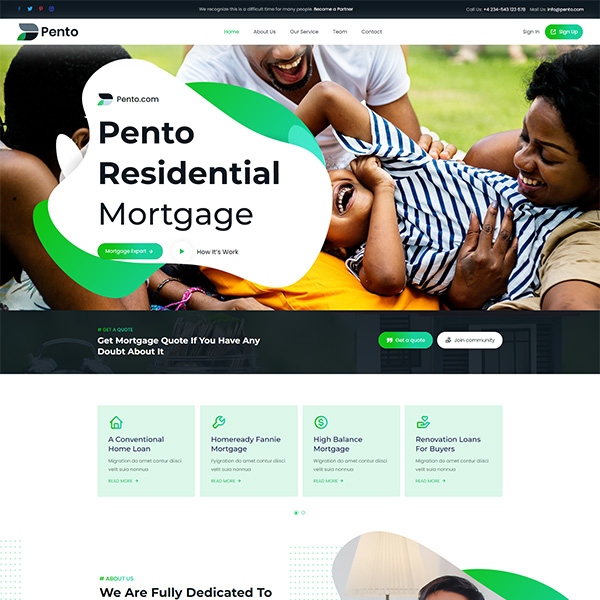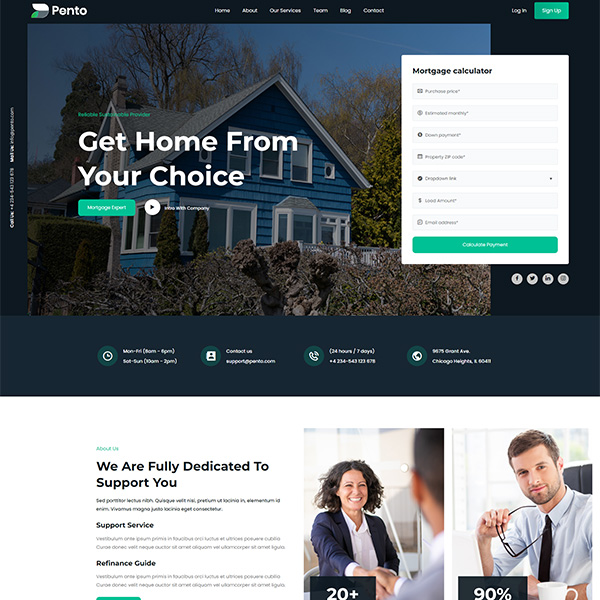Comprehensive Guide to FHA Mortgage Options
Welcome to our comprehensive guide on FHA mortgage options, a valuable resource for individuals seeking affordable homeownership solutions. The Federal Housing Administration (FHA) plays a crucial role in facilitating access to home loans for a wide range of borrowers. In this guide, we’ll explore the inner workings of the FHA mortgage program, the eligibility requirements, and the step-by-step process to qualify.
How the FHA Mortgage Program Works
- Government Backing: FHA loans are government-backed mortgages designed to encourage homeownership. The FHA doesn’t lend money directly; instead, it insures loans issued by approved lenders. This insurance mitigates the risk for lenders, making them more willing to extend loans to borrowers with less-than-ideal financial profiles.
- Down Payment Assistance: One of the standout features of FHA loans is the low down payment requirement. Borrowers can qualify for an FHA loan with a down payment as low as 3.5%, making homeownership more accessible, especially for first-time buyers or those with limited savings.
- Credit Score Flexibility: FHA loans are known for their flexibility regarding credit scores. While individual lenders may have specific requirements, borrowers with credit scores as low as 580 can still qualify for the 3.5% down payment option. Those with scores between 500 and 579 may still be eligible with a higher down payment.
- Closing Cost Assistance: FHA loans allow sellers to contribute to closing costs, providing additional financial relief to borrowers. This feature can be especially beneficial for those with budget constraints.
Requirements for FHA Mortgage Eligibility
To qualify for an FHA loan, individuals must meet certain eligibility criteria:
- Credit Score: While FHA loans are more lenient with credit scores, a minimum score of 500-579 requires a 10% down payment, while a score of 580 or higher allows for the 3.5% down payment option.
- Debt-to-Income Ratio: Lenders evaluate a borrower’s debt-to-income ratio, with a preference for ratios below 43%. This ensures the borrower can comfortably manage monthly mortgage payments.
- Steady Income: Demonstrating a reliable and stable income is crucial. Borrowers must provide proof of employment, self-employment income, or other sources of income.
- Legal Residency: FHA loans are available to U.S. citizens and legal residents. Non-U.S. citizens with valid Social Security numbers may also qualify.
Steps to Qualify for an FHA Mortgage
- Check Eligibility: Confirm your eligibility based on the FHA’s requirements, including credit score and income stability.
- Credit Check: Obtain a copy of your credit report and address any issues that may affect your credit score
- Pre-Approval: Get pre-approved for an FHA loan by working with an FHA-approved lender. This step helps you understand your budget and strengthens your negotiating position.
- Down Payment: Save for the required down payment, considering your credit score and financial situation.
- Home Search: Begin your home search within the FHA loan limits for your area. Ensure the property meets FHA’s Minimum Property Standards.
- Submit Loan Application: Complete the FHA loan application with your chosen lender, providing all necessary documentation.
- FHA Appraisal An FHA appraisal ensures the property meets safety and habitability standards. This step is crucial for loan approval.
- Closing: Attend the closing to sign the necessary documents and finalize the purchase of your home.
Benefits of a FHA Loan
FHA loans provide a pathway to homeownership for a diverse range of borrowers. By understanding how the program operates, meeting eligibility criteria, and following the necessary steps, individuals can leverage FHA mortgages to achieve their homeownership goals. If you’re exploring mortgage options, consider the benefits of an FHA loan and embark on the journey toward securing your dream home.
Frequently Asked Questions - FHA Loans
An FHA loan is a mortgage insured by the Federal Housing Administration. It’s designed to help borrowers with lower credit scores or smaller down payments qualify for home financing.
FHA loans typically require a minimum down payment of 3.5% if your credit score is 580 or higher. If your score is between 500 and 579, you may need a 10% down payment.
You can qualify for an FHA loan with a credit score as low as 500, but most lenders prefer 580 or higher for the lowest down payment option.
Yes. FHA loans require two types of mortgage insurance:
- Upfront Mortgage Insurance Premium (UFMIP): Paid at closing (usually 1.75% of the loan amount).
- Annual Mortgage Insurance Premium (MIP): Added to your monthly payment.
- Lower credit score requirements
- Smaller down payment options
- Flexible debt-to-income ratios
- Great for first-time homebuyers
Yes. FHA loan limits vary by county. In most areas for 2025, the limit is $498,257, but it can be higher in high-cost regions.
Borrowers with limited savings, lower credit scores, or first-time homebuyers often benefit most from FHA loans.



















